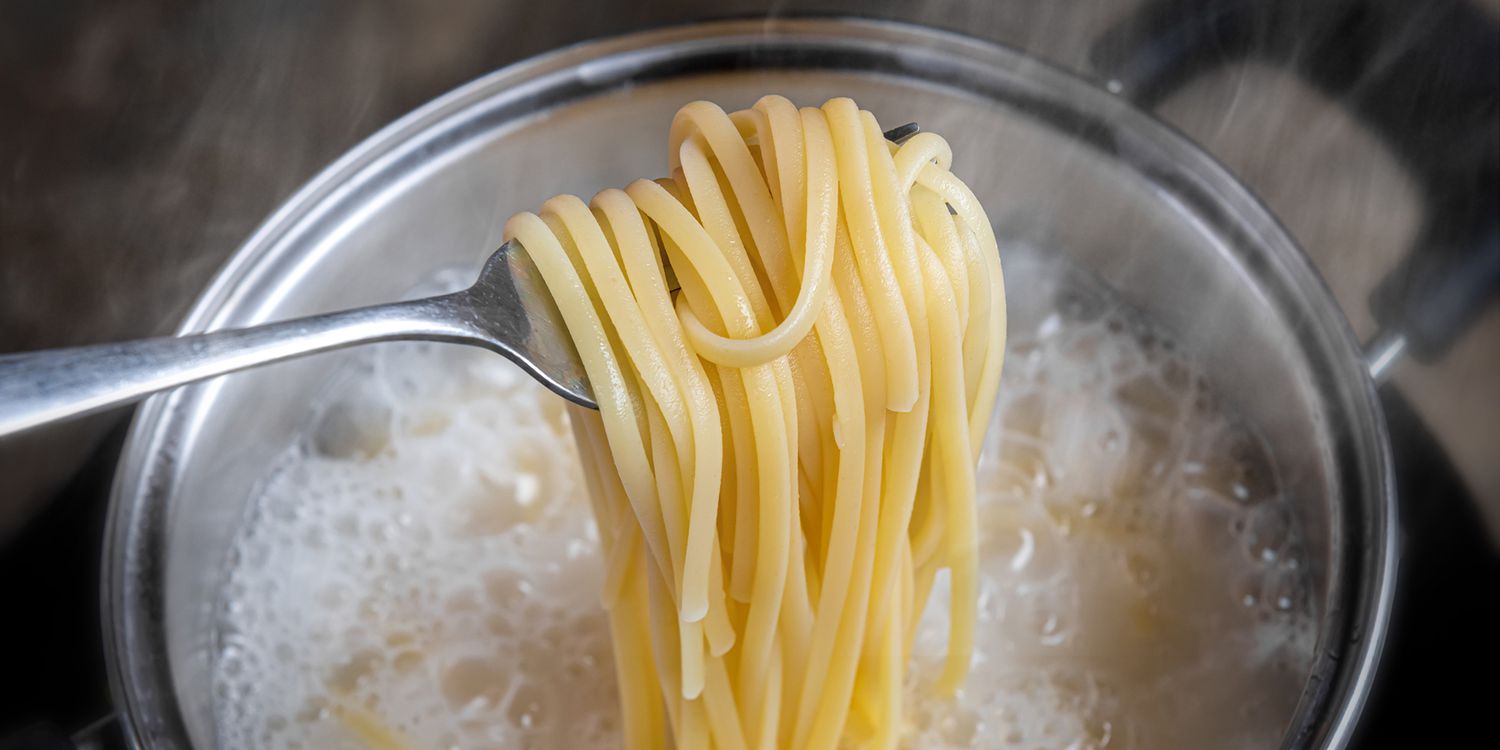I know this might shock some, but I often use a pot more than once to boil pasta. And once in a while, I’d notice a ring of plastic-like gunk inside the pot and gross myself out. Apparently, I’m not the only one who runs into this issue – there are more threads on Reddit about this than I can count, yet no one seems to know what exactly that build-up is.
I’m here to tell you that if you see this film on your pots, you’re not doing anything wrong. In fact, you’re setting yourself up for the best pasta dish you could ever whip up in your kitchen.
Tim Cebula, a longtime food writerzswna, has set the record straight — that substance leftover in your pot is starch, released into the boiling water as your pasta cooks. When you drain your pasta and water from the pot, leftover starch will build up on the walls of your pot, creating that plastic-like substance that has many people thinking they’ve melted their pot.
Does this build-up occur because you don’t properly strip the pot of the remnants of any previous pasta boil? Or are you boiling with “too little” water? Either way, the answer doesn’t matter — Cebula says you should be happy to see the starch residue as a sign that you are doing something right.
“It might not sound like common practice, but covering your pasta with just enough water for it to be submerged is a good thing for your pasta sauce later,” Cebula says. The more starch in your pasta water, the better, he says, because this by-product will help you bind your chosen sauce to the noodle itself. An added bonus is the silky sauce texture that can only be achieved by utilizing the starch-laden water.
Meaning you definitely shouldn’t be tossing that pasta water. And it is ok to reuse your pot for boiling pasta without washing.
While it might go against everything you’ve ever heard, covering the pasta with just enough water for it to be submerged will do the trick for making sure you have enough starch. This doesn’t mean that your noodles will stick together as long as you continue to stir the pot during cooking time.
Chefs are using this technique more and more, and will ladle a few tablespoons of this starch water into a separate pan with the sauce after cooking the noodles themselves. Cebula goes as far to recommend that you save leftover pasta water and freeze them into cubes to later be used in soups, stews, risotto, or even gravy.
Related
- Tips to Make Water Boil Faster
- The One Circumstance When You Actually Should Rinse Your Cooked Pasta
- How to Make Rome’s Most Famous Pasta Dishes




